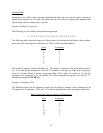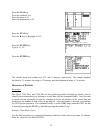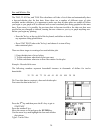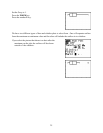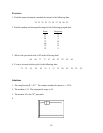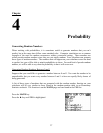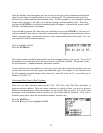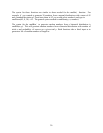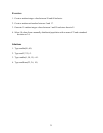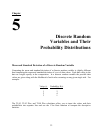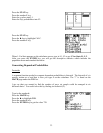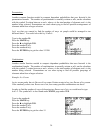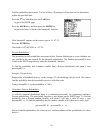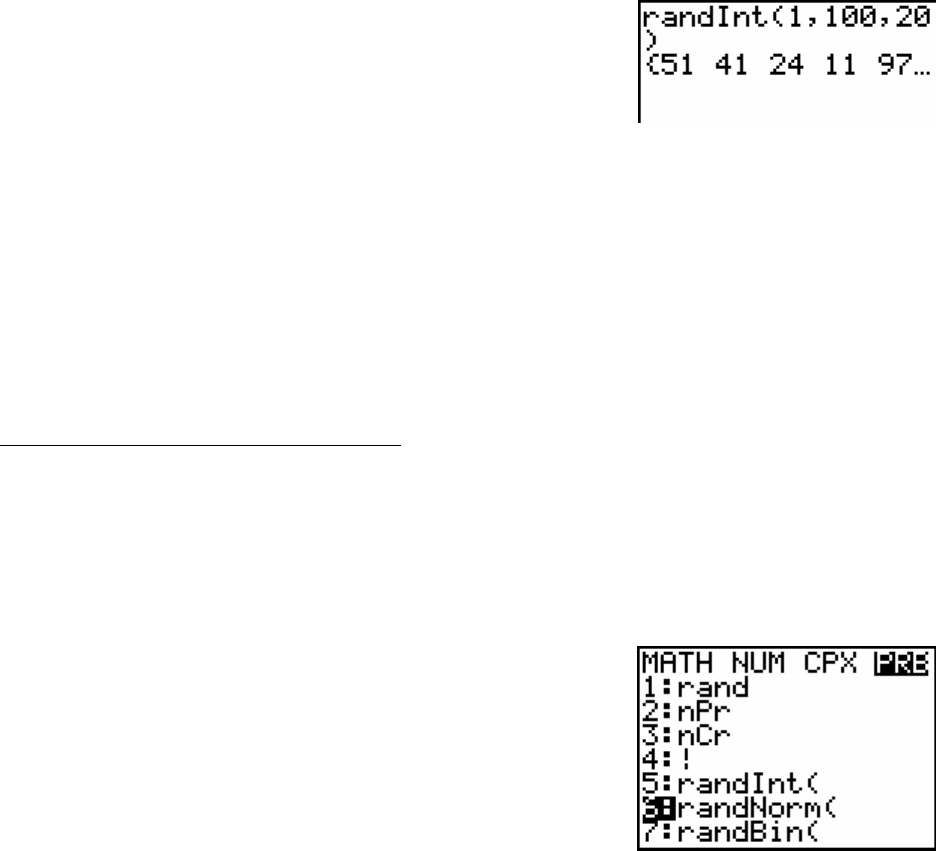
After the randInt( function appears on your screen you can type in the minimum and maximum
values for the range of random numbers you are searching for. The minimum value goes first
followed by a comma and then the maximum value. For this example we are looking for random
integer values between 1 and 100 so your finished typing would be randInt(1,100). Each time
you press the ENTER key a different random integer will appear. In general the syntax would
look like randInt(minimum, maximum).
If you needed to generate 20 values then you would have to press the ENTER key 20 times or if
you knew ahead of time that you wanted a certain number of randomly-generated integer values
within a specified range, use the same function with a slight modification to the inputs. Let’s say
you wanted 20 of these random numbers.
Type in randInt(1,100,20)
Press the ENTER key.
The twenty numbers would be generated at one time and appear across your screen. To see all of
the numbers you would need to use the arrow keys to scroll back and forth. The general syntax
for this function is randInt(minimum, maximum, number).
If you wanted to store the numbers in a list to be used with other statistical procedures you can
use the same function with once again some additional steps. For example, if you wanted to store
the 20 randomly-generated integer values between 1 and 100 in the list L1, you would type in
randInt (1,100,20)→L1.
Generating Other Kinds of Real Numbers
There are two other functions built into the TI-83, TI-83 Plus, and TI-84 Plus calculators to
generate random numbers. There are many situations in statistics where you need to generate
numbers from distributions where the numbers are not equally likely to occur. Two of the most
commonly used distributions used in statistics are the normal and the binomial. They can be
found the same place where the rand and the randInt( functions are.
Press the MATH key.
Press the ► key until you highlight the PRB.
29



